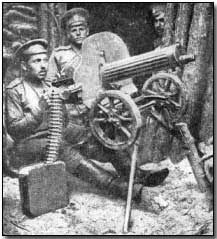Depending upon the gunner and conditions, a barrel modification could be required as often as every 200 to 250 rounds. When the hot barrel was removed, it was set aside until it was cool enough to use once again. Machine-gun groups would have as numerous as six spare barrels on hand.
Driving through a recently protected location in Belgium, the observant Liniewski found the abandoned weapon in a field. Liniewski then did what any unsupervised GI would have done in that position; he stopped his truck and took the chance to snag a terrific memento for the folks back house. As an assistance soldier, Liniewski was not familiar enough with weapons to dismantle his MG-42, so he hung on to it for a while till he discovered a camp where German prisoners of war were being held.
The weapon stayed in the Liniewski household till 2016 when his kid Marty donated the weapon to the Museum. In spite of its tendency to get too hot, the MG-42 was an outstanding weapon that was light-years of ahead of the US equivalent, the Browning M-1919A4 maker gun. Germany produced roughly 400,000 MG-42s throughout the war, some of which are still in active service.

Taken together, all these weapons gave the Red Army a more useful series of support weapons, better able to challenge the Germans for fire superiority on the battlefield. Totally detailed, this research study describes the innovation and the methods of these maker weapons. Kept in mind authority Chris Mc, Nab sets out how these machine guns were dispersed and tactically used and offers various examples of the weapons in action, from assault teams on the streets of Stalingrad to tank crews having a hard time for survival at Kursk.
Not known Facts About World War I: Changes In Modern Warfare
Illustrated with top quality photographs and specifically commissioned artwork, this is a deep analysis of these essential tools of warfare within the Soviet forces.
Taken together, all these weapons offered the Red Army a more practical series of assistance weapons, better able to challenge the Germans for fire supremacy on the battleground. Fully detailed, this study describes the innovation and the strategies of these maker weapons. Noted authority Chris Mc, Nab sets out how these maker guns were dispersed and tactically applied and supplies various examples of the weapons in action, from attack teams on the streets of Stalingrad to tank teams struggling for survival at Kursk.
Illustrated with top quality pictures and specifically commissioned artwork, this is a deep analysis of these important tools of warfare within the Soviet forces.
The gatling gun business, commanded by a captain, had an assigned strength of six commissioned officers and 172 employed guys, and brought 16 weapons, 4 of which were spares. Within the business there were 3 platoons and a headquarters section. A first lieutenant led the first squadron, while 2nd lieutenants led squads 2 and 3.
About First World War Machine Guns


Within each area were two gun squads, each with one gun and nine men, led by corporals. The gun squad had one combat cart, pulled by a mule, to transfer its gun and ammunition as near to the firing position as enemy fire permitted. From there the teams moved the weapons and ammo forward by hand.
It had only two companies, identical to the other machine weapon business in terms of workers and weapons. Each gun squad used an unique motor cars and truck to carry its workers, weapon and equipment.
In this role the guns were positioned 300 to 1000 meters to the back of the cutting edge. When they utilized their guns because style, the device gun officers often ran into opposition from the rifle business leaders, who preferred to have the guns further forward, fearing that their infantrymen would be at threat of stray low rounds as they advanced under the overhead device gun fire.
Furthermore, they quickly found that the device guns were high top priority targets for opponent fire, which it was helpful to have the guns at some range from the infantry positions. Given that enemy gatling gun positioned the best hazard to the attacking troops, the maker gun teams made every effort to find the opponent weapons and to focus their fire upon them.
Getting The Weapons Of The Ottoman Army To Work
A proportion of the weapons was held back as a reserve under command of the device weapon officer. 6Machine gun tactical teaching determined that in the defense the Hotchkiss guns need to only seldom be situated within 100 yards of the front line which a minimum of two-thirds of the guns must be echeloned back through the whole defensive position, situated so that surrounding guns would be mutually supporting.
7 To find other features on the see our THE DOUGHBOY CENTER wants to constantly expand this feature. Additions and talk about these pages might be directed to:.
I was impaled on this. My only worry was that he would press the trigger which would have made a hell of a mess. In the meantime, my sergeant who was near he saw me; came in close; shot the fellow and after that raised me, with the assistance of another man, off the bayonet.
A bayonet wound straight it goes in it harms and the withdrawal is probably even more distress than the 'putting in' because the 'putting in' is instantaneous. Another type of weapon was the trench club.